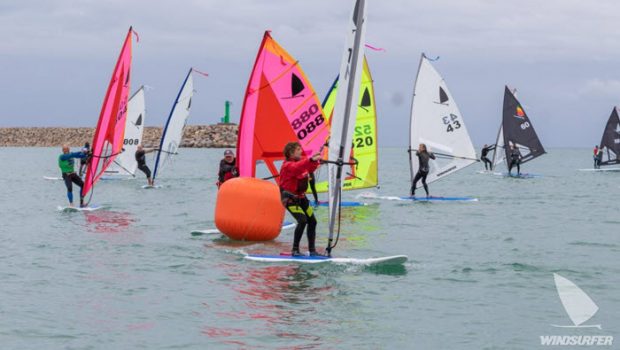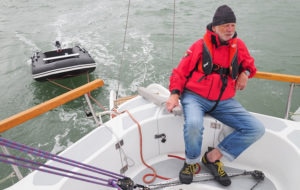Windsurfer Class launches renaissance

The Windsurfer Class, the one from which everything was born in 1968, is back. What began with its first World Championship in 1973, changes in the windsurfing landscape forced a hiatus in 1988 for the title, but a new group has launched a renaissance.
The explosion of the Class was noticeable in July 2018 at the World Trophy of Torbole where over 100 athletes from 10 nations competed, and with the re-foundation of the Dutch, French and South African National Classes, the ball was clearly rolling.
Such progress was made that in November 2018 the World Sailing awarded International Class status again to the International Windsurfer Class Association (IWCA), allowing for the first World Championship of the new era to be held in 2019.
The Windsurfer LT, as the equipment is known, remains connected to the past but with new construction and design to serve all abilities and a broad wind range. As a result of this renewed interest, the IWCA has submitted its interest to be the Men’s and Women’s Windsurf Equipment for the Paris 2024 Olympic Sailing Competition.
Through the versatility of the Windsurfer equipment, Class competition includes course racing, slalom, freestyle and marathon. As the International Olympic Committee is eager for dynamic events, these competition options allow for close course proximity to shore for spectators.
In November 2018, at the annual meeting in Sarasota, World Sailing confirmed the continuing participation of windsurfing (male and female) at the Paris 2024 Olympics, but at the same time announced a reevaluation of the equipment by a technical commission.
The testing and recommendation will be undertaken by a special technical commission of World Sailing. The criteria include a mandate to reduce the risk of supplier monopolies in the interest of all Olympic sailors.
Windsurfing has been an Olympic sailing event since 1981 when the IYRU (International Yacht Racing Union), the predecessor of World Sailing, had to appoint the Olympic Class, selecting between two sailboards: the original Windsurfer One Design or the Windglider.
The Windsurfer was manufactured in several continents under license of Hoyle Schweitzer, where the Windglider was developed and manufactured by Fred Ostermann in Germany only.
Surprisingly the Windglider was selected in late 1983, less than one year before the start of the Olympic Games. The main motivation was that the Windsurfer was manufactured in polyethylene, which was rejected because its form could be slightly changed by exposing the board to the sun, increasing the temperature of the material.
At the time, the decision of the IYRU was a scandal and the IOC had to make the decision to admit the Windsurfer as a demonstration sport to the Games in the disciplines of Slalom, Long Distance and Freestyle. The motivation was that the Olympic sailing event was lacking attraction and that the Windsurfer with its colourful 5.7 square meter sail could improve this image thanks to its spectacular disciplines.
Today the characteristics of the Windsurfer are the same as in 1984. The rig has maintained its original form. The board was slightly redesigned and stiffened as it is not manufactured in polyethylene anymore, and it is much lighter than its predecessor.
For this reason, its new name is Windsurfer LT (Light) and it has been developed as a “White Board”. This means that all interested Windsurfing brands can sell this board under their own logo.
To view the presentation of the Windsurfer Class submitted to the technical committee of World Sailing, click here.










